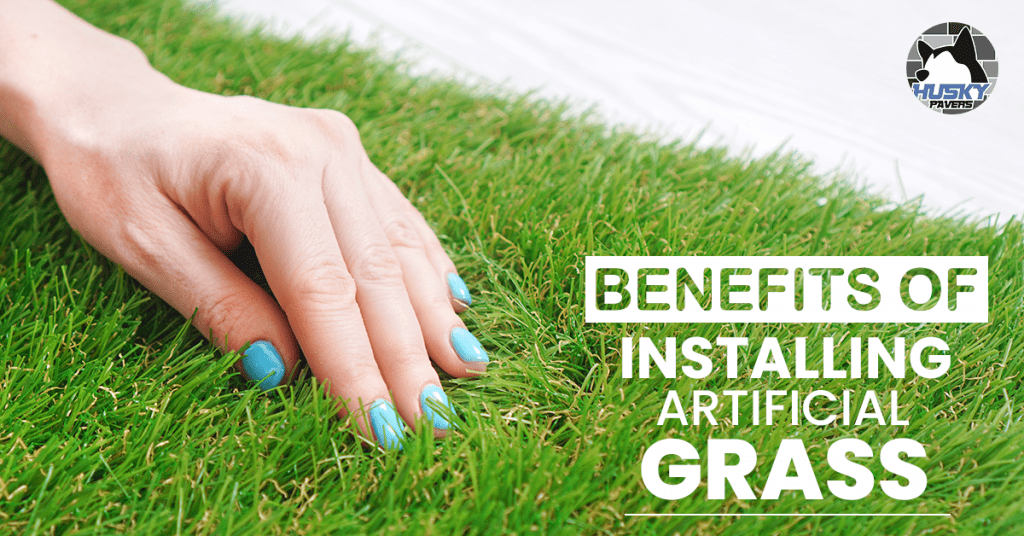
Artificial grass seems like a dream come true for many homeowners. It cuts down on water bills, time it would take to mow, and all the other things that come with having a living lawn. Not to mention it looks nicer without the risk of the random brown patch where the soil allows nothing to grow.
However, having artificial grass in San Diego, Los Angeles, or anywhere else isn’t without its needed maintenance. Artificial grass can still get dirty, runs the risk of discoloring, or will even start to stink if not maintained, especially kids, pets, wildlife, or even high pollinating plants are involved.
Neglecting to care for your artificial grass can make your lawn look dull, matted, dirty, and even more neglected than if you had just kept normal grass on your property. And while you can choose to pay someone to get your artificial grass cleaned, you can just as easily do it yourself.
In fact, proper cleaning techniques and products can help your artificial grass maintain its appearance or even bring it back to its former glory.
While you might not have to worry about revving up the lawn mower each week, it is still recommended that you do a regular weekly cleaning. Despite popular belief, you can’t take care of artificial grass like you would a carpet. Water, vinegar, and baking soda won’t really do much to clean specific spots or take care of any smelly odors.
Some all natural, non-toxic cleaners may help in some circumstances, but there are times when a larger effort is needed.
Here are some directions on how to clean and maintain your artificial grass.
As always, make sure you test and solution or technique on a small, unnoticeable patch to avoid any greater damage from the cleaning solutions you may choose.
Artificial Grass Cleaning and Maintenance Step #1
Remove dust, dirt, and leaves. This is especially important if you happen to live in areas of East County that have a lot of dust, or in wetter areas like near the coast. Usually, a stiff bristle broom or a flexible rake will do the trick. Metal rakes carry the risk of ripping your turf, so it would be best to avoid using those.
Sometimes, you may need to remove what didn’t get swept or raked up by hand, particularly things that might have been buried in the turf that the rake or broom couldn’t grab. This would usually be things like solid pet waste. Fortunately, since artificial grass is generally pet friendly, spraying your lawn with the hose is usually a good cleanup option once the bigger mess is dealt with.
If you see the grass getting flat in the areas that you work on, once the debris is clean, use the broom or rake to go in the opposite direction to fluff it back up.
Artificial Grass Cleaning and Maintenance Step #2
Prepare your cleaning solution. Like what was mentioned above, you want to use a cleaner that is non-toxic and won’t damage or discolor your artificial grass. Usually, the best product to use is biodegradable and is safe for kids and pets. A good mix ratio is 1 cup of solution to 1 gallon of water. Before you spray your cleaning mix, spray your artificial grass with a hose and then apply the cleaning solution.
Artificial Grass Cleaning and Maintenance Step #3
Once your artificial grass is sprayed down with the cleaner, break out the hose or power washer and spray everything away. Continue to spray until all the foam is gone. Usually, the hose will push it to the edge.
Artificial Grass Cleaning and Maintenance Step #4
If needed, repeat steps 2 and 3 until you are satisfied with the results. From there, let your artificial grass air dry for a few hours. Once dry, use your broom or rake to fluff the grass back to shape.
It should be noted that step 1 should be done at least twice a month, or once a week if you live in areas that are wetter or dustier than typical locations. Sometimes, this can be done just by spraying everything with your hose, or you can do like what was mentioned in step 1 with the broom or rake.
The deeper cleaning explained in steps 2 to 4 can be done about once a year, especially if your artificial grass doesn’t get a lot of foot traffic, you don’t have pets that regularly use it to relieve themselves or are close to any wildlife that may use it.
These steps are crucial to ensure that your artificial grass is looking as close to the day it was installed for much longer, even for years to come.


 Get In Touch
Get In Touch
Recent Comments